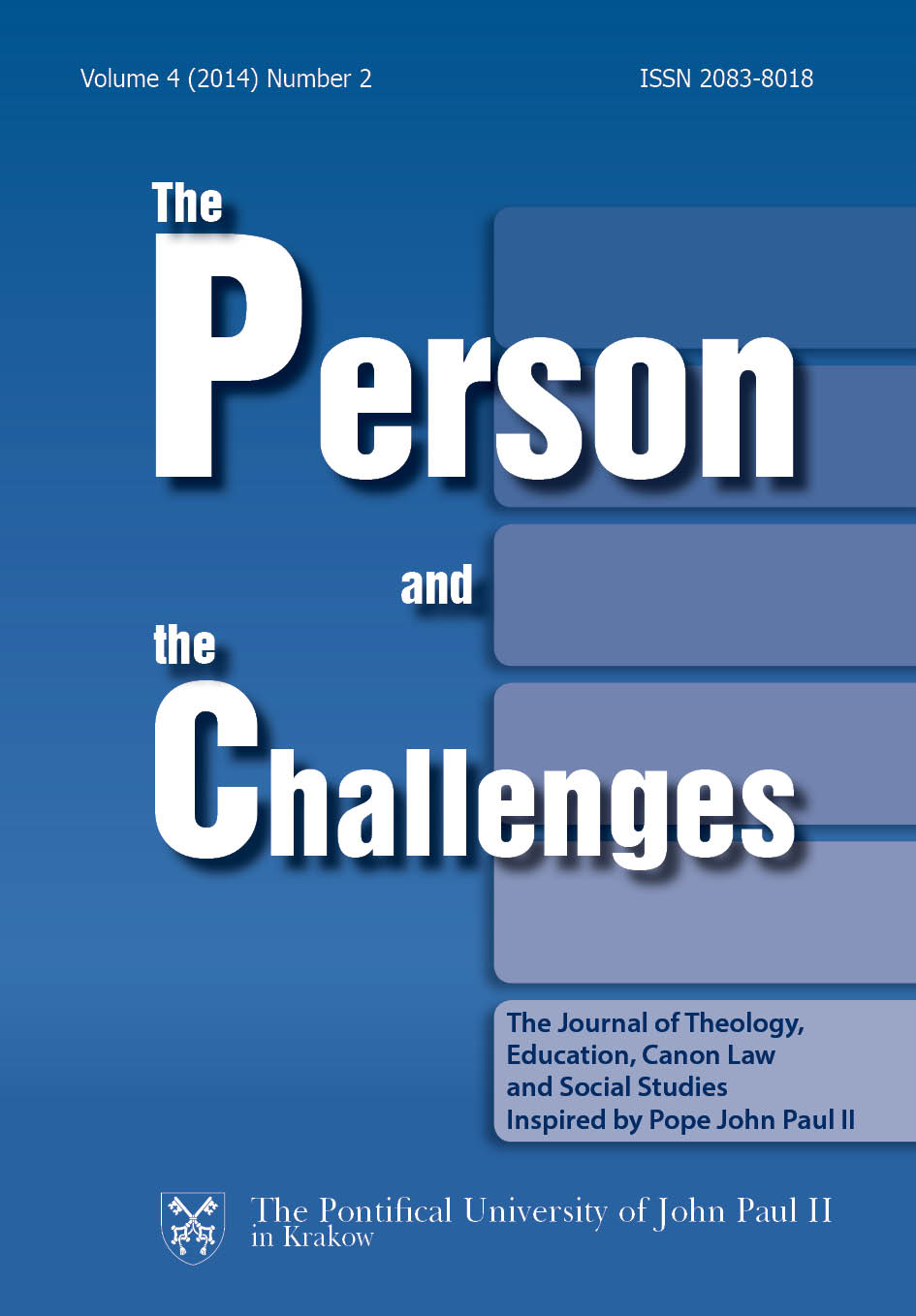Theocentrism in Edith Stein’s (St. Teresa Benedicta of the Cross’s) Late Anthropology
DOI:
https://doi.org/10.15633/pch.666Keywords:
Janusz Korczak, child, upbringing, originality, relevanceAbstract
This article proposes the thesis that Edith Stein’s late anthropology has a theocentric orientation. The threefold structure of a human being consisting of a body, soul and spirit is examined in order to validate the thesis. First of all, the finitude of a human being points out to the eternal being and – consequently – human beings are not conceivable by themselves, without the context of God. Moreover, the hylomorphic union of the body and soul adopted from Aristotelian and Thomistic philosophy is enriched in Stein’s anthropology by the concept of spirit. This results in a threefold structure and is reason enough to suggest man’s iconic similarity to the Trinity. Furthermore, Stein takes over St. Teresa of Avila’s concept of an internal center of the soul, which can be a meeting point between a person and God. The analysis of the soul’s center supports the main thesis.
Downloads
Published
Issue
Section
License
Copyright (c) 2015 Alicja Janiak, Alina Rynio

This work is licensed under a Creative Commons Attribution 4.0 International License.
Authors who publish with this journal agree to the following terms:
- Authors retain the copyright and full publishing rights without restrictions, and grant the journal right of first publication with the work simultaneously licensed under a Creative Commons Attribution 4.0 International License that allows others to share the work with an acknowledgement of the work's authorship and initial publication in this journal.
- Authors are able to enter into separate, additional contractual arrangements for the non-exclusive distribution of the journal's published version of the work (e.g., post it to an institutional repository or publish it in a book), with an acknowledgement of its initial publication in this journal.
- Authors are permitted and encouraged to post their work online (e.g., in institutional repositories or on their website) prior to and during the submission process, as it can lead to productive exchanges, as well as earlier and greater citation of published work (See The Effect of Open Access).

